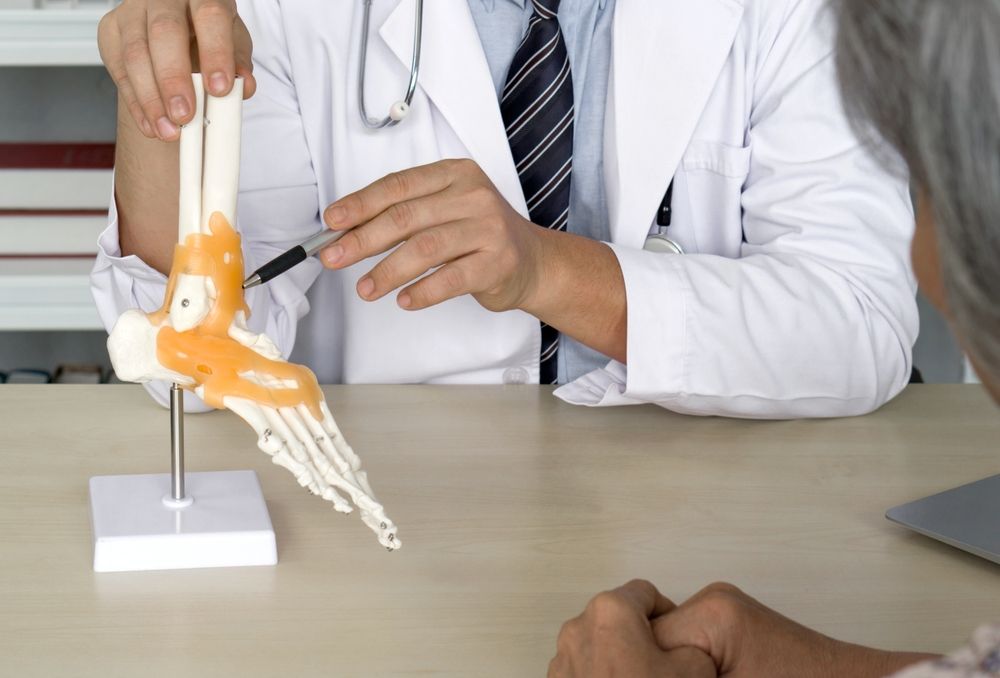Foot and ankle pain can be life-altering, particularly when arthritis is the root cause. For many individuals across Bloomfield, Englewood, and Union City, NJ, the struggle to maintain mobility while managing chronic joint pain can feel endless. At Premier Orthopaedics & Sports Medicine, P.C., we understand how debilitating this condition can be. Learning about the latest surgical options such as joint replacement and fusion can help patients make informed decisions about their care and regain the active lifestyle they deserve.
Understanding Foot and Ankle Arthritis
Foot and ankle arthritis is a degenerative joint condition that leads to the breakdown of cartilage in the joints, causing pain, swelling, stiffness, and loss of function. Unlike other joints in the body, the foot and ankle endure significant weight-bearing pressure and are essential for nearly every physical movement. Arthritis in these areas can result from various causes, including osteoarthritis (wear-and-tear), rheumatoid arthritis (autoimmune-related), or post-traumatic arthritis (following injury or fracture).
When cartilage deteriorates, bones begin to rub against each other, leading to inflammation and pain. Over time, even simple activities like walking, climbing stairs, or standing for extended periods can become difficult. Conservative treatments such as physical therapy, orthotics, anti-inflammatory medications, and cortisone injections can offer temporary relief, but they may not be enough for advanced arthritis. At that stage, surgical intervention becomes a key option to restore function and relieve pain.
Joint Replacement for the Ankle
Total ankle replacement, also known as ankle arthroplasty, is a surgical procedure where the damaged joint surfaces are replaced with artificial implants. This option is generally recommended for patients with severe arthritis who still have a relatively healthy bone structure and ligament function around the ankle. The goal is to relieve pain while preserving or even restoring normal ankle motion, allowing for a more natural gait and improved overall function.
Unlike traditional methods that limit joint mobility, ankle replacements provide better movement compared to fusion, making them attractive for younger or more active individuals. The procedure involves removing the arthritic portions of the tibia and talus and replacing them with metal and plastic components that mimic the function of a healthy joint. Recovery from an ankle replacement typically includes physical therapy and a gradual return to weight-bearing activity, often taking several months to a year for full recovery.
However, not all patients are ideal candidates. Individuals with poor bone quality, severe deformity, or infection risks may be directed toward alternative surgical options. Additionally, while ankle replacements can last many years, they may require revision surgery later in life, particularly for highly active individuals.
Ankle and Foot Joint Fusion Surgery
Joint fusion, or arthrodesis, is another surgical option that aims to eliminate arthritic pain by permanently joining two or more bones in the joint. This procedure is particularly useful for those with severe arthritis, poor joint alignment, or when joint replacement is not feasible. By fusing the bones, the surgeon removes the damaged cartilage and creates a single, solid bone structure, eliminating the movement that causes pain.
Although fusion sacrifices joint mobility, it can significantly improve quality of life by creating a stable and pain-free joint. This procedure is especially effective in the subtalar, midfoot, or ankle joints, where movement may already be limited due to advanced arthritis. Recovery from fusion surgery typically involves a longer non-weight-bearing period to allow the bones to heal and fuse completely, often supported by casting or boot immobilization.
The success of fusion lies in its durability. Once healed, the fused joint does not wear down like artificial implants might. However, patients may experience increased stress on adjacent joints over time, potentially leading to arthritis in those areas. Therefore, careful assessment and a personalized treatment plan are critical when considering fusion.
Choosing Between Joint Replacement and Fusion
Deciding between ankle joint replacement and fusion requires a thorough understanding of the patient’s medical history, activity level, and long-term goals. Both procedures aim to relieve pain, but they achieve this in very different ways. Fusion is often the better option for patients with high physical demands, deformities, or conditions that compromise bone healing. In contrast, joint replacement offers better post-operative mobility and is ideal for patients who wish to maintain a more natural walking pattern.
It’s essential to consult with a foot and ankle specialist who can evaluate the extent of joint damage and recommend the best course of action. Diagnostic imaging, physical exams, and discussions about lifestyle and expectations all play a vital role in forming a surgical plan. While both options have strong success rates, patient satisfaction often depends on choosing the procedure most aligned with their daily function and long-term outcomes.
Consider the Following When Evaluating Options:
- Level of daily activity and lifestyle expectations
- Age, bone health, and underlying medical conditions
- Severity and location of arthritis within the foot or ankle
- Desire for joint motion versus long-term stability
Making an informed decision can significantly impact post-surgical satisfaction and recovery. That’s why patients in Bloomfield, Englewood, and Union City should prioritize discussions with their healthcare provider about their specific needs and surgical goals.
Life After Surgery: Recovery and Long-Term Outcomes
Recovery from both joint replacement and fusion surgeries requires patience, commitment, and realistic expectations. For ankle replacements, patients typically experience quicker improvements in mobility but must protect their new joint from overuse or high-impact activities. Physical therapy plays a vital role in regaining strength and flexibility, while ongoing monitoring ensures implant longevity.
Fusion surgeries, while more restrictive in terms of movement, provide a lasting solution to pain. After the bones have successfully fused, most patients find they can walk without discomfort and resume many of their regular activities. Adjustments in footwear and daily habits may be needed to accommodate limited range of motion, but the pain relief can be life-changing.
Regardless of the procedure, long-term success depends on proper rehabilitation, follow-up care, and preventive strategies to avoid stress on other joints. Foot and ankle arthritis can feel overwhelming, but with the right surgical solution, many patients can reclaim their independence and return to the life they love.
For individuals in Bloomfield, Englewood, and Union City, Premier Orthopaedics & Sports Medicine, P.C. encourages ongoing education and open communication with orthopedic professionals to explore all treatment options for foot and ankle arthritis.
Resources:
Saltzman, C. L., & Amendola, A. (2009). Ankle arthritis: diagnosis and treatment options. Journal of the American Academy of Orthopaedic Surgeons.
Haddad, S. L., et al. (2007). Intermediate and long-term outcomes of total ankle arthroplasty. Journal of Bone and Joint Surgery.
Mann, R. A., & Coughlin, M. J. (2013). Adult foot and ankle surgery. Saunders Elsevier.




